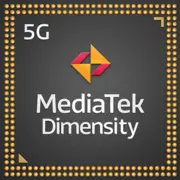MediaTek Dimensity 1000 Plus

MediaTek Dimensity 1000 Plus: Review of the Processor That Continues to Impress in 2025
April 2025
Introduction
Despite being announced back in 2020, the MediaTek Dimensity 1000 Plus remains in demand in the budget and mid-range smartphone segments. With its balanced performance, support for 5G, and energy efficiency, the processor continues to appear in new devices priced between $300 and $500. In this article, we will explore what sets the Dimensity 1000 Plus apart from its competitors, who it is suitable for, and which smartphones with this processor are worth considering in 2025.
1. Architecture and Process Technology: Balancing Power and Efficiency
Process: The Dimensity 1000 Plus is manufactured using TSMC's 7nm process, which by 2025 is no longer considered cutting-edge (modern flagships have moved to 3–4nm). However, this technology provides a good balance between performance and power consumption.
CPU:
- 8-core architecture with Cortex-A77 and Cortex-A55 clusters:
- 4 high-performance Cortex-A77 cores: 2.6 GHz (1×2.6 GHz + 3×2.2 GHz);
- 4 energy-efficient Cortex-A55 cores: up to 2.0 GHz.
This configuration allows for task distribution: A77 for gaming and intensive applications, A55 for background processes.
GPU: Mali-G77 MP9 — a 9-core GPU that handles most mobile games at medium settings in 2025. It supports up to 2K resolution and screen refresh rates of up to 144 Hz.
Features:
- HyperEngine 2.0 technology for optimizing gaming performance;
- AI Accelerator APU 3.0 for artificial intelligence tasks.
2. Real-World Performance
Gaming:
- Genshin Impact — stable 40–45 FPS on medium settings (by 2025, the game has received numerous updates, but the Dimensity 1000 Plus still performs well).
- PUBG Mobile — up to 60 FPS in HD mode.
- Honkai: Star Rail — 30–35 FPS on high settings.
The Mali-G77 MP9 GPU slightly lags behind the Adreno 650 (Snapdragon 865), but the difference is not critical for casual gamers.
Multimedia:
- Support for HDR10+ and 4K@60 FPS video encoding;
- Hardware decoding of AV1 — relevant for streaming services like YouTube and Netflix.
AI Applications:
- APU 3.0 accelerates photo processing (e.g., night mode), voice assistants, and AR applications. For instance, low-light photos are processed in 1–2 seconds.
Power Consumption and Heating:
- TDP of 10W — higher than that of modern chips (for example, the Dimensity 9200 has a TDP of 5–7W), but smartphones with this processor typically come equipped with cooling systems.
- In PCMark tests, battery life is about 8–10 hours with moderate use.
3. Built-in Modules: Future Connectivity Available Today
- 5G Modem: Support for Sub-6 GHz (speeds up to 4.7 Gbps), but lack of mmWave (not critical for markets outside the US).
- Wi-Fi 6: Bandwidth up to 2.4 Gbps — ideal for streaming and downloading large files.
- Bluetooth 5.2: Support for connecting two devices simultaneously, low power consumption for wearable electronics.
- Navigation: GPS, GLONASS, Galileo, QZSS — high positioning accuracy.
Note: Satellite communication (e.g., emergency calls via Iridium) is not supported — this feature is reserved for flagships of 2024–2025.
4. Comparison with Competitors
Generation of 2020-2021:
- Snapdragon 865 (AnTuTu ~600k): Better graphics (Adreno 650), but lacks an integrated 5G modem (requires an external chip).
- Exynos 990 (AnTuTu ~550k): Higher CPU performance, but significant heat generation.
- Kirin 990 5G: Similar performance, but limited availability due to sanctions.
Modern Analogues (2025):
- Snapdragon 7 Gen 3 (AnTuTu ~700k): 30% faster in gaming, but smartphones featuring it start at $450.
- Dimensity 7050 (AnTuTu ~600k): More recent design, but the difference in real scenarios is minimal.
Conclusion: The Dimensity 1000 Plus lags behind new chips in energy efficiency but excels in price.
5. Use Case Scenarios
Gaming: Suitable for casual gamers. For maximum settings in AAA titles, it's better to choose devices with Snapdragon 8 Gen 2 or Dimensity 9200.
Everyday Tasks: Smooth operation with social networks, messengers, and web browsing. Multitasking (e.g., streaming + background work) does not cause lag.
Photo and Video:
- Support for cameras up to 80 MP;
- Recording at 4K@60 FPS with stabilization;
- AI enhancement of details and colors.
Example: Smartphones like the Xiaomi Redmi K30 Ultra (2025 price: ~$350) shoot video comparable in quality to the iPhone 13.
6. Pros and Cons
Pros:
- Affordable device prices;
- Support for 5G and Wi-Fi 6;
- Good optimization for mobile gaming.
Cons:
- Heating under prolonged loads;
- No support for screen fingerprint scanners at 120 Hz+;
- Outdated process technology (7 nm compared to 4 nm in competitors).
7. Practical Tips for Choosing a Smartphone
- Cooling: Look for models with vapor chambers (e.g., Realme X7 Max).
- Battery: Ideally, 4500–5000 mAh.
- Display: AMOLED with a refresh rate of 90–120 Hz for smooth animations.
- 5G Modem: Ensure your operator supports Sub-6 GHz bands.
Popular Models in 2025:
- Poco X4 Pro 5G ($320);
- Vivo V21 5G ($380);
- Oppo Reno5 Pro+ (released in 2021, but new units still available for $400).
8. Final Conclusion: Who is the Dimensity 1000 Plus Suitable For?
This processor is an excellent choice for:
1. Budget gamers willing to compromise between price and graphics quality.
2. Users who value battery life — even in 2025, smartphones with it run longer than many new releases.
3. 5G enthusiasts — the technology remains relevant and devices with Dimensity 1000 Plus are cheaper than their counterparts.
Key Benefits: Price-to-performance ratio, support for modern communication standards, sufficient power for most tasks.
Conclusion
The MediaTek Dimensity 1000 Plus proves that even aging chips can remain relevant. If you are looking for a smartphone under $500 with 5G support, good camera quality, and smooth performance — consider devices featuring this processor. True, it won't be able to run Cyberpunk 2077 Mobile on ultra settings, but for everyday tasks and moderate gaming, its capabilities are more than adequate.
Basic
4x 2 GHz – Cortex-A55
GPU Specifications
Connectivity
Memory Specifications
Miscellaneous
Benchmarks
Phones with Dimensity 1000 Plus



Comparison of Devices with Dimensity 1000 Plus
Compared to Other SoC
Share in social media
Or Link To Us
<a href="https://cputronic.com/en/soc/mediatek-dimensity-1000-plus" target="_blank">MediaTek Dimensity 1000 Plus</a>